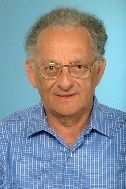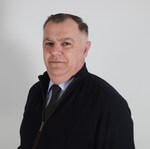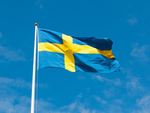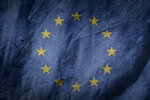09/06/2011
Product Pick of the Week - Wiring systems powered by highly-efficient superconductors
 Prof. Guy Deutscher
Prof. Guy Deutscher
Wiring systems powered by highly-efficient superconductors have long been a dream of science, but researchers have faced such practical challenges such as finding pliable and cost-effective materials. Now researchers at Tel Aviv University have found a way to make an old idea new with the next generation of superconductors.
Dr. Boaz Almog and Mishael Azoulay working in the group of Prof. Guy Deutscher at TAU's Raymond and Beverly Sackler School of Physics and Astronomy have developed superconducting wires using fibers made of single crystals of sapphire to be used in high powered cables. Factoring in temperature requirements, each tiny wire can carry approximately 40 times more electricity than a copper wire of the same size. They have the potential to revolutionize energy transfer, says Dr. Almog.
High power superconductor cables take up much less space and conduct energy more efficiently, making them ideal for deployment across grids of electricity throughout a city. They will also offer a more effective method for collecting energy from renewable sources, such as solar and wind energy. Superconducting wires can also be used for energy storage and enable devices which enhance grid stability.
The new superconductors were first presented at the Israel Vacuum Society Conference in June 2011, and will be shown at both the European Conference on Applied Superconductivity and the Association of Science Technology Centers Conference this fall.
Beating the heat:
One of the things that make our copper wires inefficient is overheating, Dr. Almog explains. Due to electrical resistance found in the metal, some of the energy that flows through the cables is cast off and wasted, causing the wires to heat up.
But with superconductors, there is no resistance. A self-contained cooling system, which requires a constant flow of liquid nitrogen, keeps the wire in its superconducting state. Readily available, non-toxic, and inexpensive — a gallon of the substance costs less than a gallon of milk — liquid nitrogen provides the perfect coolant.
Even with the benefit of liquid nitrogen, researchers were still hard pressed to find a material that would make the ideal superconductor. Superconductors coated on crystal wafers are effective but too brittle, says Dr. Almog, and although superconductors on metallic tapes had some success, the product is too expensive to manufacture in mass quantities.
To create their superconductors, the researchers turned to sapphire fibers, developed by Dr. Amit Goyal at the Oakridge National Lab in Tennessee and lent to the TAU team. Coated with a ceramic mixture using a special technique, these single-crystal fibers, slightly thicker than a human hair, have made innovative superconductors.
Going macro:
Dr. Almog is currently working to produce better superconductors that could transport even larger amounts of electric current. One area where such superconductors could lend a hand is in collecting renewable energy sources. "Sources such as wind turbines or solar panels are usually located in remote places such as deserts or offshore lines, and you need an efficient way to deliver the current," explains Dr. Almog. These superconductors can traverse the long distances without losing any of the energy to heat due to electrical resistance.
Superconducting cables could also be an efficient way to bring large amounts of power to big cities "If you want to supply current for a section of a city like New York, you will need electric cables with a total cross-section of more than one meter by one meter. Superconductors have larger current capacities using a fraction of the space," says Dr. Almog. Different parts of a city could be cross-wired, he adds, so that in the event of a blackout, power can be easily rerouted.
Inspiring young scientists:
Developing a superior superconductor is only part of TAU's mission. Dr. Almog is also dedicated to making this technology accessible and exciting as a way to capture the imagination of aspiring scientists. TAU has manufactured superconductor wafers which, filled with liquid nitrogen like their cable cousins, can be locked in place by strong magnets and levitate. Placed on a magnetic track, the wafer zooms through the air like George Jetson's space-age car. It might look like magic, but it's actually a phenomenon called "quantum trapping." Kits that demonstrate this "magnetic levitation" have been distributed in science museums throughout Israel, and Dr. Almog hopes to expand their distribution internationally. And when the day's work is done? "We also make ice cream with the liquid nitrogen," Dr. Almog grins.
American Friends of Tel Aviv University (www.aftau.org) supports Israel's leading, most comprehensive and most sought-after center of higher learning. Independently ranked 94th among the world's top universities for the impact of its research, TAU's innovations and discoveries are cited more often by the global scientific community than all but 10 other universities.
Internationally recognized for the scope and groundbreaking nature of its research and scholarship, Tel Aviv University consistently produces work with profound implications for the future.
A special thanks to George Hunka and EurekAlert, Dr. Boaz Almog, Mishael Azoulay and Prof. Guy Deutscher
For more information on this article or if you would like to know more about what www.windfair.net can offer, please do not hesitate to contact Trevor Sievert at ts@windfair.net
www.windfair.net is the largest international B2B Internet platform – ultimately designed for connecting wind energy enthusiasts and companies across the globe!
Dr. Boaz Almog and Mishael Azoulay working in the group of Prof. Guy Deutscher at TAU's Raymond and Beverly Sackler School of Physics and Astronomy have developed superconducting wires using fibers made of single crystals of sapphire to be used in high powered cables. Factoring in temperature requirements, each tiny wire can carry approximately 40 times more electricity than a copper wire of the same size. They have the potential to revolutionize energy transfer, says Dr. Almog.
High power superconductor cables take up much less space and conduct energy more efficiently, making them ideal for deployment across grids of electricity throughout a city. They will also offer a more effective method for collecting energy from renewable sources, such as solar and wind energy. Superconducting wires can also be used for energy storage and enable devices which enhance grid stability.
The new superconductors were first presented at the Israel Vacuum Society Conference in June 2011, and will be shown at both the European Conference on Applied Superconductivity and the Association of Science Technology Centers Conference this fall.
Beating the heat:
One of the things that make our copper wires inefficient is overheating, Dr. Almog explains. Due to electrical resistance found in the metal, some of the energy that flows through the cables is cast off and wasted, causing the wires to heat up.
But with superconductors, there is no resistance. A self-contained cooling system, which requires a constant flow of liquid nitrogen, keeps the wire in its superconducting state. Readily available, non-toxic, and inexpensive — a gallon of the substance costs less than a gallon of milk — liquid nitrogen provides the perfect coolant.
Even with the benefit of liquid nitrogen, researchers were still hard pressed to find a material that would make the ideal superconductor. Superconductors coated on crystal wafers are effective but too brittle, says Dr. Almog, and although superconductors on metallic tapes had some success, the product is too expensive to manufacture in mass quantities.
To create their superconductors, the researchers turned to sapphire fibers, developed by Dr. Amit Goyal at the Oakridge National Lab in Tennessee and lent to the TAU team. Coated with a ceramic mixture using a special technique, these single-crystal fibers, slightly thicker than a human hair, have made innovative superconductors.
Going macro:
Dr. Almog is currently working to produce better superconductors that could transport even larger amounts of electric current. One area where such superconductors could lend a hand is in collecting renewable energy sources. "Sources such as wind turbines or solar panels are usually located in remote places such as deserts or offshore lines, and you need an efficient way to deliver the current," explains Dr. Almog. These superconductors can traverse the long distances without losing any of the energy to heat due to electrical resistance.
Superconducting cables could also be an efficient way to bring large amounts of power to big cities "If you want to supply current for a section of a city like New York, you will need electric cables with a total cross-section of more than one meter by one meter. Superconductors have larger current capacities using a fraction of the space," says Dr. Almog. Different parts of a city could be cross-wired, he adds, so that in the event of a blackout, power can be easily rerouted.
Inspiring young scientists:
Developing a superior superconductor is only part of TAU's mission. Dr. Almog is also dedicated to making this technology accessible and exciting as a way to capture the imagination of aspiring scientists. TAU has manufactured superconductor wafers which, filled with liquid nitrogen like their cable cousins, can be locked in place by strong magnets and levitate. Placed on a magnetic track, the wafer zooms through the air like George Jetson's space-age car. It might look like magic, but it's actually a phenomenon called "quantum trapping." Kits that demonstrate this "magnetic levitation" have been distributed in science museums throughout Israel, and Dr. Almog hopes to expand their distribution internationally. And when the day's work is done? "We also make ice cream with the liquid nitrogen," Dr. Almog grins.
American Friends of Tel Aviv University (www.aftau.org) supports Israel's leading, most comprehensive and most sought-after center of higher learning. Independently ranked 94th among the world's top universities for the impact of its research, TAU's innovations and discoveries are cited more often by the global scientific community than all but 10 other universities.
Internationally recognized for the scope and groundbreaking nature of its research and scholarship, Tel Aviv University consistently produces work with profound implications for the future.
A special thanks to George Hunka and EurekAlert, Dr. Boaz Almog, Mishael Azoulay and Prof. Guy Deutscher
For more information on this article or if you would like to know more about what www.windfair.net can offer, please do not hesitate to contact Trevor Sievert at ts@windfair.net
www.windfair.net is the largest international B2B Internet platform – ultimately designed for connecting wind energy enthusiasts and companies across the globe!
- Source:
- Researchers at Tel Aviv University - Dr. Boaz Almog, Mishael Azoulay and Prof. Guy Deutscher
- Author:
- Posted by Trevor Sievert, Online Editorial Journalist / George Hunka and EurekAlert
- Email:
- ts@windfair.net
- Link:
- www.windfair.net/...
- Keywords:
- wind, wind energy, wind turbine, rotorblade, awea, ewea, wind power, suppliers, manufacturerstrevor sievert




























